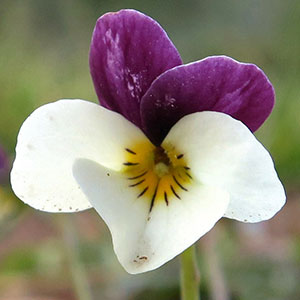Viola hallii
Viola egglestonii
Hall's violet, Oregon violet, wild pansy
cedar glade or glade violet, glade violet
1–3, decumbent or ascending to erect, ca. 1/2 subterranean, glabrous, clustered on single, short, vertical, deep-seated caudex.
basal and cauline;
basal: 1–4, palmately compound, ± 2-ternate or 3-ternate, leaflets 3;
stipules adnate to petiole, forming 2 linear-lanceolate wings, unlobed, margins entire, apex of each wing free, acute;
petiole 5–8 cm, glabrous;
blade ovate to deltate, 2.8–6 × 2.6–6.5 cm, ± coriaceous, base tapered, ultimate lobes narrowly elliptic, lanceolate, or oblanceolate, 1–7 mm wide, margins entire, ciliate or eciliate, apex acute, mucronulate, surfaces glabrous;
cauline similar to basal except: stipules usually lanceolate, sometimes broadly ovate, ± leaflike, margins toothed;
petiole 1.3–6 cm;
blade 2–4.8 × 1.2–5.5 cm.
basal, 3, prostrate to ascending;
stipules linear-lanceolate, margins entire, apex acute;
petiole 1.5–7 cm, usually glabrous;
earliest leaf blades ± deltate or 3-lobed, mid-season blades 5–9-lobed, 1–9 × 1–10 cm, base truncate to cuneate, middle lobe lanceolate or spatulate to narrowly ovate, lateral lobes lanceolate or spatulate to falcate, margins serrate, sometimes with deltate or falcate appendages or teeth, ciliate, apex acute, surfaces usually glabrous, rarely pubescent.
2.5–11 cm, glabrous.
2–15 cm, usually glabrous, rarely pubescent.
sepals lanceolate to ovate, margins ciliate, auricles 0.5–1 mm;
petals: upper 2 almost black abaxially, dark reddish violet adaxially, lower 3 pale yellow, cream, or ± white, lateral 2 bearded, with deep yellow to orange patch basally, dark reddish violet-veined, lowest with deep yellow to orange patch basally, dark reddish violet-veined, 5–18 mm, spur yellow, gibbous, 0.5–2 mm;
style head bearded; cleistogamous flowers absent.
sepals lanceolate to ovate, margins ciliate or eciliate, auricles 0.5–1 mm;
petals light to dark blue-violet on both surfaces, lower 3 and sometimes upper 2 white basally, lower 3 darker violet-veined, lateral 2 densely bearded, lowest 10–15 mm, spur usually lilac, gibbous, 2–3 mm;
style head beardless; cleistogamous flowers on prostrate peduncles.
ellipsoid, 4–12 mm, glabrous.
ellipsoid, 11–14 mm, glabrous.
light brown, shiny, 3.2–3.5 mm.
beige, mottled to bronze, 2–3 mm.
= 60, 72.
= 54.
Viola hallii
Viola egglestonii
Viola hallii was discovered on the grounds of Willamette University in Salem, Oregon, by Elihu Hall, a professor at that institution (V. B. Baird 1942). Leaves of V. hallii are similar to V. beckwithii.
(Discussion copyrighted by Flora of North America; reprinted with permission.)
N. H. Russell (1965) was the first to consider Viola egglestonii similar to V. septemloba. After analyzing leaf-blade lobing patterns, L. E. McKinney considered it a subspecies of V. septemloba. Although similarities exist between these taxa, we maintain them as distinct species.
(Discussion copyrighted by Flora of North America; reprinted with permission.)


